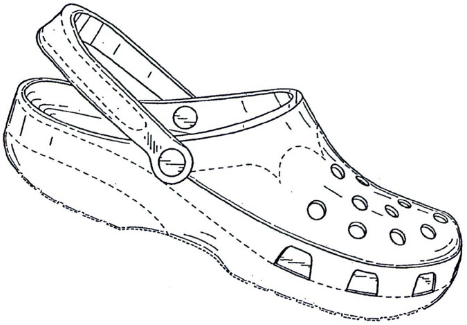This website uses cookies so that we can provide you with the best user experience possible. Cookie information is stored in your browser and performs functions such as recognising you when you return to our website and helping our team to understand which sections of the website you find most interesting and useful.
Industrial designs: prior disclosure: the non-relevance of the place of disclosure. Invalidity of the “Crocs” registered community design for lack of novely.
Paris, September 4, 2018 – On March 14th, the General Court of the European Union issued a momentous decision to invalidate the registered community design relating to the famous “Crocs” clogs due to its premature disclosure to the public. This is a dark period for the Crocs company, after invalidation decisions of the design in the USA and of the three-dimensional trademark in the Dominican Republic.

To ensure the protection of a registered community design (RCD), it must notably be new and must not have been previously disclosed to the public.
However, protection may be granted in the case of self-disclosure (by the creator himself), if the disclosure took place within a period not exceeding twelve months prior to the filing date of the registration or the priority date of the RCD. However, a second rule applies to any disclosure: it is necessary that in normal business practice, the disclosed facts not be reasonably known to the specialized circles of the sector concerned, operating in the European Community.
In the present case, the RCD representing the Crocs sandal was filled on November 22, 2004, under the priority of a US patent filed on May 28, 2004. On March 20, 2013, the company Gifi Diffusion attacked the registration of this design for invalidity, arguing that it was not novel in view of a disclosure occurring more than twelve months before the priority date claimed by the Crocs company and in particular made by the Crocs company itself.
To support its action, Gifi Diffusion notably affirmed that the Crocs design had been disclosed three times, namely: during the presentation of the clogs at a boat show in Fort Lauderdale, Florida (1), when Crocs models were posted on the website www.crocs.com (2), and when 10,000 pairs of Crocs were put on sale via a distributor and several resellers in the United States (3).
To defend itself, the Crocs company has -among others- advanced that the potential disclosures took place on the American territory and were brought solely to the knowledge of the American public. Thus, the applicant company has attempted to show that the facts of disclosure could not have been known to the specialized and European circles of the sector concerned.
However, the General Court of the European Union rejected these arguments, finding that the applicant company did not clearly demonstrate with hard evidence that the specialized circles of the sector concerned, operating in the European Community, had not heard of one of these three events during which the Crocs clogs were made known to the public. Indeed:
- With regard to the Florida boat show: the Crocs company did not show that it was impossible for European professionals to have participated in this international fair or, at the very least, to have heard of this event which had a “resounding success”,
- Concerning the posting of Crocs’ models on the website of the applicant company: the latter did not demonstrate that said site was inaccessible in one way or another to specialized Internet users residing in the European Union;
- And finally, regarding the sale of Crocs: it could not have reasonably gone unnoticed by the specialized circles of the sector in the European territory because it was carried out by many American distributors.
Therefore, the General Court of the European Union invalidated the RCD relating to Crocs, considering that it did not matter whether the disclosure of these shoes took place outside the territory of the European Union. On the contrary, the General Court states that this alone does not suffice to show that the facts of disclosure could not reasonably be known to the specialized circles of the sector concerned, operating in the European Community.
By this decision, the General Court strictly applies the novelty condition and its exceptions to European industrial designs and emphasizes that it is for the person who avails himself of an exception to provide proof.
Caution is therefore required in case of the first disclosure of a design. It is recommended to proceed with filing before any disclosure, particularly if the protection of the design is to be extended abroad, as a number of countries do not accept the 12-month self-disclosure exception, and for those which do accept it, it cannot be interpreted in an extensible way, particularly as regards the date or the conditions of disclosure, which are difficult to restrict and control in a globalized environment.
